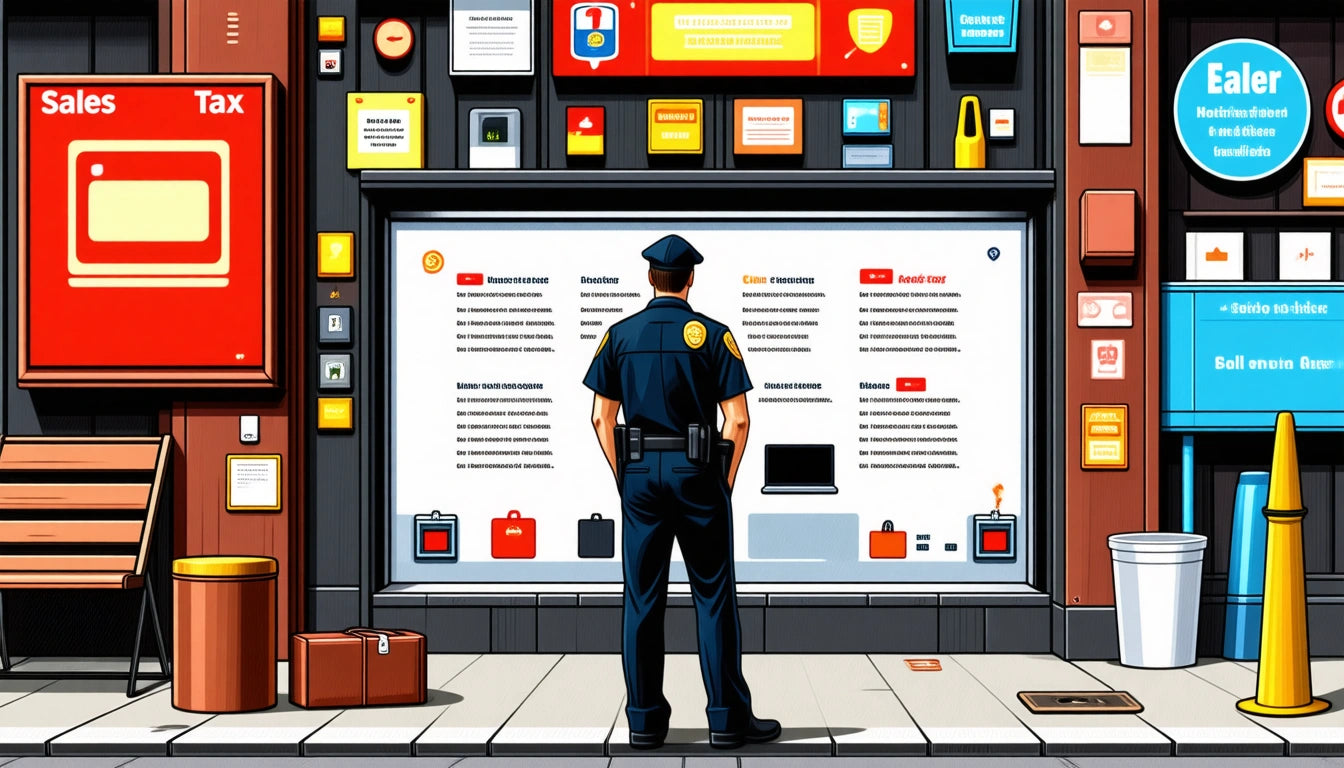Table of Contents
Understanding Sales Tax and Police Presence in Chicago
Chicago's economic and public safety landscapes are shaped by its tax structure and law enforcement resources. For residents and businesses alike, understanding how much sales tax is in Chicago IL and the size of the police force provides valuable context for daily operations and long-term planning.
Chicago Sales Tax Breakdown: Understanding the Rates
The sales tax in Chicago is a composite of several different tax rates imposed by various government entities. As of 2023, the total sales tax rate in Chicago stands at 10.25%, making it one of the highest in the nation. This rate comprises:
- State of Illinois: 6.25%
- City of Chicago: 1.25%
- Cook County: 1.75%
- Regional Transportation Authority: 1.00%
For businesses operating in Chicago, this means collecting a dime and a quarter for every dollar of taxable goods sold. According to our guide on Chicago tax rates, certain items may be subject to additional taxes, such as restaurant meals, alcohol, and soft drinks.
Sales Tax in Chicago vs. Other Illinois Regions
How much is sales tax in Chicago IL compared to surrounding areas? The 10.25% rate exceeds most neighboring jurisdictions. For instance, Will County's sales tax rate is generally lower, which can influence purchasing decisions for price-sensitive consumers.
This regional variation becomes particularly relevant for businesses near county lines or city boundaries. Cannabis retailers, for example, must navigate these tax differences while also complying with Illinois cannabis regulations that add additional layers of taxation.
Chicago Police Department Size and Structure
Turning to public safety, many residents and visitors wonder how many officers in Chicago are actively serving. As of the most recent official data, the Chicago Police Department (CPD) employs approximately 12,000 officers, though the actual number of sworn officers on active duty fluctuates due to retirements, new recruits, and administrative assignments.
The CPD represents one of the largest municipal police forces in the United States, second only to the New York Police Department. The size of the force reflects the unique challenges of policing America's third-largest city, with its diverse neighborhoods and varying public safety needs.
Officer Distribution Across Chicago Districts
The question of how many policemen in Chicago are serving specific areas is crucial for understanding local safety resources. The CPD divides the city into 22 police districts, each with varying officer allocations based on factors such as:
- Population density
- Crime statistics
- Geographic size
- Special needs (tourism areas, business districts)
Downtown areas and districts with higher crime rates typically receive more officers per capita than other neighborhoods. This distribution strategy aims to optimize limited resources while addressing the most pressing public safety concerns.
For businesses in the cannabis industry, understanding police presence can influence security planning and operational decisions. When designing packaging for products like custom pre-roll cones and packaging solutions, compliance with visibility requirements and child-resistant features becomes particularly important in areas with varying levels of police oversight.
Tax Revenue and Public Safety: The Funding Relationship
There's an important connection between Chicago's sales tax structure and its police force. A portion of the city's tax revenue directly funds public safety initiatives, including police department operations. Understanding this relationship provides context for both fiscal and security planning.
Recent years have seen debates about police funding and resource allocation, with some advocating for increased investment in community policing and others supporting alternative public safety approaches. These discussions directly impact how tax dollars are spent and how many officers in Chicago will serve in coming years.
For businesses operating in Chicago, particularly those in regulated industries like cannabis, the dual considerations of tax compliance and security planning remain essential. The Illinois cannabis regulations create specific requirements that interact with both tax obligations and security needs.
When comparing Chicago's approach to other regions, as detailed in our multi-state tax comparison, businesses can gain valuable perspective on how different jurisdictions balance tax policy with public safety funding.
The ongoing evolution of Chicago's tax structure and police department will continue to shape the city's economic and safety landscape. For residents and businesses alike, staying informed about these fundamental aspects of urban governance remains essential for successful navigation of the Windy City's complex municipal systems.











Leave a comment
All comments are moderated before being published.
This site is protected by hCaptcha and the hCaptcha Privacy Policy and Terms of Service apply.